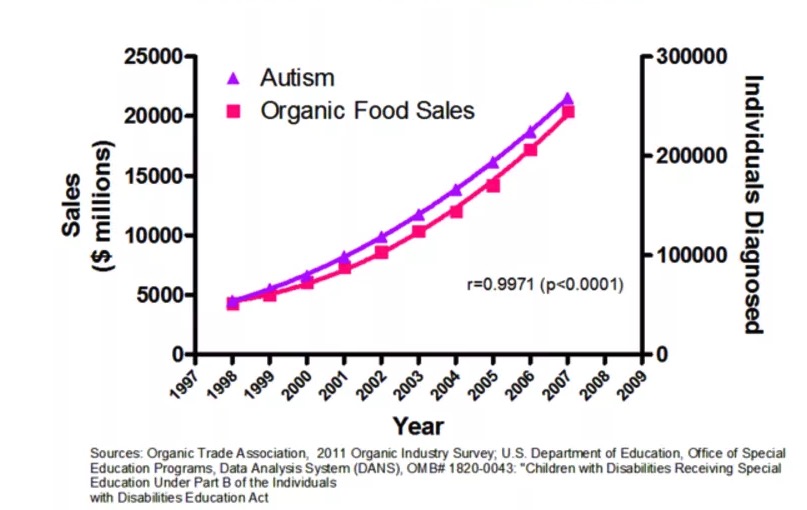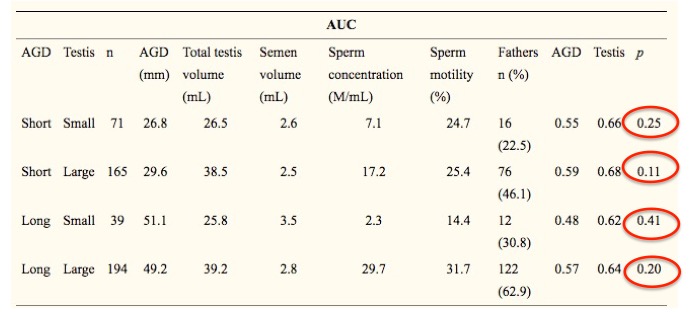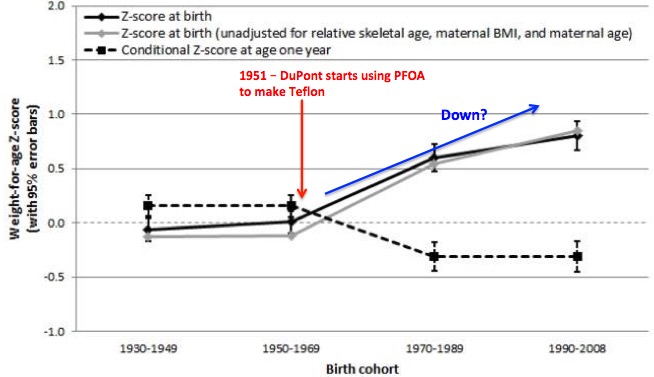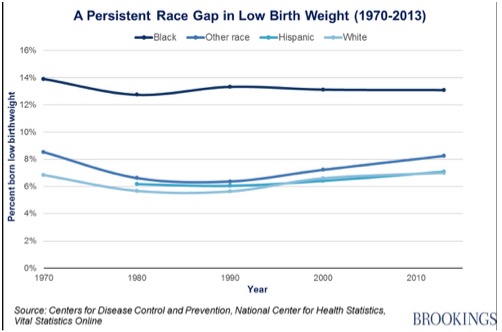The American Academy of Pediatrics (AAP) just issued a policy statement about common chemicals found in trace amounts in food, all of which have been in use for at least 50 years. Here is one section of the press release in which they say a bunch of scary stuff about the chemicals.
But there's a bit of a problem in the claims below. Everything is wrong.
"Some food additives raise safety concerns for child health; AAP offers guidance "Bisphenols used in polycarbonate plastic containers and linings of aluminum cans have been associated with obesity and attention-deficit/hyperactivity disorder. Phthalates used in plastic food wraps and tubing and storage containers in industrial food production are known to affect male reproductive development. Grease-proof paper can contain perfluoroalkyl substances associated with decreases in birth weight. Perchlorate prevents static in some packaging and inhibits thyroid function, which is crucial for brain development as well as a host of other key functions. Nitrates used as preservatives and color enhancers have been linked to various types of cancer."
Leonardo Trasande, M.D. July 23, 2018
Let's examine the AAP's claims. They are both flimsy and appallingly unoriginal.
- SAFETY OF CHEMICALS IN FOOD
"More than 10,000 chemicals are allowed to be added to food in the U.S., but the Food and Drug Administration (FDA) is unable to ensure all of those chemicals are safe."
Seriously? Even Dr. Oz knows (maybe) that it is impossible to prove or ensure that anything is safe. You are always one experiment away from an unexpected finding. According to this logic, all 10,000 chemicals should be continuously tested until something bad is found. If not, keep going. The perfect example of the precautionary principle. And also typical in scare tactics.
- BPA
"associated with obesity and attention-deficit/hyperactivity disorder"
"Bisphenols" refers to BPA - one of the chemicals used to make polycarbonate plastics which are commonly used in food packaging. BPA, which has been used for this since the 1960s, has spawned innumerable studies which have concluded that it is responsible for just about every ailment suffered by the human species. The term "associated with" is code for trying to prove something with a crappy epidemiological study. But association tells us nothing about causation. Otherwise, we would have to conclude that buying organic food causes autism. You will never find a better association than this:

More important is the comprehensive two-year toxicology study conducted in rats by the FDA (the CLARITY-BPA Core Study), which found no toxicity, reproductive issues, cancers, you name it, from BPA at any dose. (See BPA Is Just As Dangerous As It Never Was). Yet there are still holdouts hoping for a miracle. Much like Knicks fans.
3. PHTHALATES
"Phthalates used in plastic food wraps and tubing and storage containers in industrial food production are known to affect male reproductive development."
Phthalates, oily chemicals used to make hard plastics softer and more flexible, have been one of the poster children of chemical scares for decades. And the American Council has been debunking these scares for that entire time. The scare initially linked phthalates and women with diabetes, something we addressed in 2013.
There is plenty of evidence to debunk this and other scares about phthalates. In 2009 Michael A. Kamrin, Professor Emeritus at the Center for Integrative Toxicology at Michigan State University wrote a 17-page review about the impact of phthalates on public health and concluded:
Since the scientific evidence strongly suggests that risks to humans are low, phthalate regulations that have been enacted are unlikely to lead to any marked improvement in public health.
Michael A. Kamrin, Phthalate Risks, Phthalate Regulation, and Public Health: A Review, Journal of Toxicology and Environmental Health, Part B: Critical Reviews, 12:2, 157-174 (2009) DOI: 10.1080/10937400902729226
Another knock on this phthalates is that they change the anogenital distance (AGD) - the distance from the anus to the base of the penis - in boys and that this is supposedly a measure of reproductive function in males.
But it's nonsense. A 2015 study published in the Journal of Assisted Reproduction and Genetics in which the authors claim to be "the first to examine the benefit of an AGD measurement in a male infertility evaluation" is an anogenital mess full of data like these:

Note that the table above, which tries to correlate anogenital distance with various parameters of male fertility, does not have one single statistically significant data point. If you read enough papers about chemicals and human health in environmental journals the use of poor data to draw a conclusion is quite common.
- PERFLUOROALKYL CARBOXYLIC ACIDS (PFOA, ETC.)
"associated with decreases in birth weight"
The press release quoted above refers to the publication of an AAP policy statement entitled "Food Additives and Child Health," which appeared in the July 2018 edition of the journal Pediatrics. It was written by three members of AAP's Council On Environmental Health, and if they are trying to convince the world that chemicals like PFOA are decreasing birth weight, they are relying on some rather shaky evidence. For example, the graph below becomes awfully hard to explain:
Figure 2 shows that birth weight and birth length have increased almost linearly over the 80 year period studied.

Birth weights have been consistently rising since PFOA was introduced. Source: William Johnson, Ph. D. et al., "Eighty-year trends in infant weight and length growth: the Fels Longitudinal Study" J Pediatr. 2012 May; 160(5): 762–768.
And so does this:

If these graphs don't sufficiently dispose of the PFOA/birth weight scare, the weakness of the only reference in the policy statement relating to birth rate should. It is a meta-analysis in the journal Environmental Health Prospectives. ACSH advisor Stan Young, an expert biostatistician, had this to say:
"I've been studying meta-analysis papers where the study used observational data. The short answer is it is junk. Here are some reasons why:
- They start with thousands of paper based on their initial computer search. Then they apply various rules (sounds good, but are arbitrary) to reduce the list to 9 papers. The implication is that if you get to select 9/~3000 you can guide the results to what you want. Looking across many meta-analysis studies, thousands become tens in each meta-analysis. The opportunities for guiding the results are obvious.
More subtle problems:
- In each selected input paper, the researchers may have examined hundreds to thousands of questions, p-hacking, and selected one to present. Can the claim in the paper be statistically justified? NO.
- If the researcher gets no effect or an effect in the wrong direction, then they can simply no publish. Publication bias. The file drawer problem - the study is relegated to the file drawer and not published. In med chem, you might try a reaction. If it does not work, you simply don't publish. Editors generally do not accept negative studies.
- Each researcher has the option to try this or that analysis. They only publish when they get what they want. A restatement of Item 3.
- External consideration. It is relatively easy to do a meta-analysis. It is all computer work. Analysis software is free. No new data. Just grab some papers and see if you can make a story. There are now meta-analysis factories. Many are in China. I'm told a team can produce one paper per week. We are being flooded with meta-analysis studies.
- You have to realize that any claim coming from an observational study is very unlikely to be real. So it is garbage in and garbage out.
- Animal toxicology is relatively worthless, as you know. It makes no sense to use animal data if you have human data.
- Lots of problems.
Stan Young, Ph.D. Private Communication, July 27, 2016
Given the graphs above and the weakness of the only reference to PFOA and its impact on birth weight, there is no credible evidence to back up the AAP claim about lower birth weights.
- (SODIUM OR POTASSIUM) PERCHLORATE
"Perchlorate prevents static in some packaging and inhibits thyroid function..."
This won't take long. Perchlorate salts exist naturally in the ground and in the air and also enter the environment as a result of fireworks and rocket fuel. Perchlorate competes with iodide in the thyroid gland. As such it has been used as a drug to treat hyperthyroidism (due to Graves disease) and other thyroid gland disorders which result from excess iodine.
But the scare about perchlorate and thyroid arises entirely from ignoring dose or exposure. Even workers who handle the chemical don't suffer any ill effects from it.
"No significant effects on serum levels of TSH [throid-stimulating hormone], total serum thyroxine (TT4), T3, or free thyroxine index (FTI) were found among the ammonium perchlorate workers studied by Gibbs et al. (1998). The mean airborne concentration of perchlorate to which the workers were exposed ranged from 0.02 to 0.63 mg/m3 . The researchers estimated that exposure to airborne perchlorate provided an average cumulative lifetime absorbed dose of up to 0.01 mg perchlorate/kg/day for high-exposure workers. Comparison of pre- and post-shift serum thyroid hormone measurements for individual workers failed to find any evidence of a transient effect associated with daily exposure."
- NITRATES
"Nitrates used as preservatives and color enhancers have been linked to various types of cancer"
Of all the phony scares that AAP has trumpeted the nitrate/nitrite (1) cancer myth is arguably the most egregious. It is total nonsense and has been thoroughly debunked. It takes all of two papers to set things straight. The first, entitled "Food sources of nitrates and nitrites: the physiologic context for potential health benefits," which was published in the American Journal of Clinical Nutrition, tells us that nitrates/nitrites "Approximately 80% of dietary nitrates are derived from vegetable consumption"
- "Nitrites are produced endogenously through the oxidation of nitric oxide and through a reduction of nitrate by commensal bacteria in the mouth and gastrointestinal tract"
- "As such, the dietary provision of nitrates and nitrites from vegetables and fruit may contribute to the blood pressure––lowering effects..."
From the European Food Safety Committee:
- "Although fruit and vegetables contribute 11-41% of exogenous nitrite dietary intake ... this amount is overshadowed by the endogenous reduction of secreted salivary nitrate to nitrite". So if you scarf a couple of Papaya King dogs the amount of nitrate/nitrate in them is irrelevant compared to that from vegetables or your own spit.
- And there is plenty of evidence that nitrates/nitrites don't cause cancer, which is thoroughly addressed in a paper in the British Journal of Clinical Pharmacology.
CONCLUSIONS
- BPA doesn't cause obesity, ADHD, or anything else.
- The science of phthalate toxicity is about as bad as it gets. You can bet your anogenital distance on this.
- If PFOA is causing reduced birth weights then why have these weights risen constantly since the chemical was first used about 70 years ago?
- The perchlorate anion may compete for iodide in the thyroid gland, but not at the levels we are exposed to. Not even at the level that workers are exposed to.
- If nitrate causes cancer then we really need to stop eating vegetables and salivating, because this is where most of comes from.
It is unclear why an organization of pediatricians would want to drag out a bunch of tired old bogus scares about chemicals that perfectly safe at the levels we are exposed to. What do they have to gain?
That's the million dollar question, baby.
NOTE:
(1) Nitrates and nitrites are interconvertible in the body. This is why I group them together.




